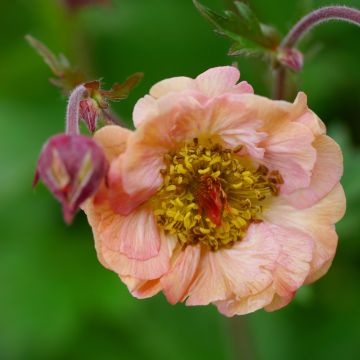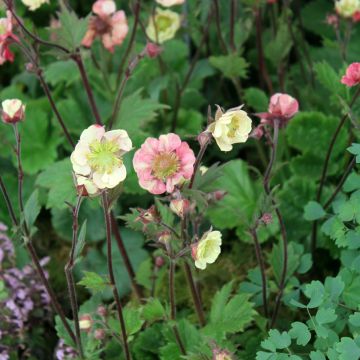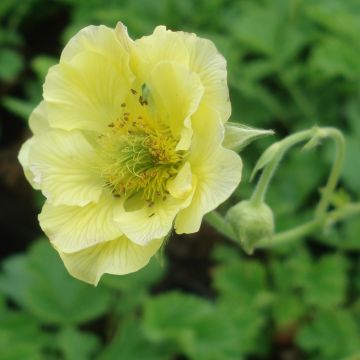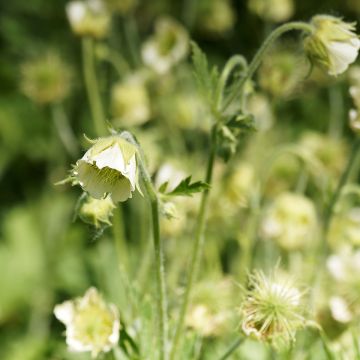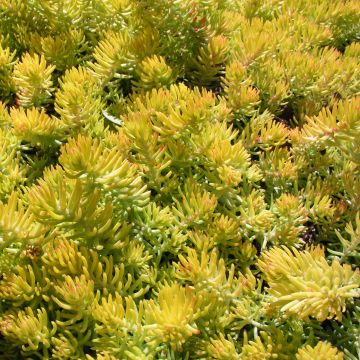

Geum Pretticoats Peach


Geum Pretticoats Peach


Geum Pretticoats Peach


Geum Pretticoats Peach


Geum Pretticoats Peach
Geum Pretticoats Peach
Geum Pretticoats Peach
Avens
I ordered two water avens of this variety and what a delight! The young plants are growing vigorously and buds are forming nicely. Thank you very much.
Anthony, 15/03/2022
Special offer!
Receive a €20 voucher for any order over €90 (excluding delivery costs, credit notes, and plastic-free options)!
1- Add your favorite plants to your cart.
2- Once you have reached €90, confirm your order (you can even choose the delivery date!).
3- As soon as your order is shipped, you will receive an email containing your voucher code, valid for 3 months (90 days).
Your voucher is unique and can only be used once, for any order with a minimum value of €20, excluding delivery costs.
Can be combined with other current offers, non-divisible and non-refundable.
Home or relay delivery (depending on size and destination)
Schedule delivery date,
and select date in basket
This plant carries a 12 months recovery warranty
More information
We guarantee the quality of our plants for a full growing cycle, and will replace at our expense any plant that fails to recover under normal climatic and planting conditions.

Would this plant suit my garden?
Set up your Plantfit profile →
Description
Geum Pretticoats Peach is a beautiful avens, forming a compact clump of semi-evergreen wavy leaves. From spring to the end of summer, it produces flowers in changing shades, between peach and apricot, at the end of branched stems. Its dense habit, robustness, and floribundity make it a good choice for slightly wild, moist, and rich borders, in full sun or light shade.
Pretticoats Peach belongs to the Rosaceae family, just like lady's mantle, bearded iris, and strawberries. The wild parents of this hybrid are plants that grow in moist to wet habitats in the Northern Hemisphere. They have semi-evergreen leaves that are slightly coarse, highly veined, and lobed, forming a dense clump. For several months, the plants produce tall branched stems, well above the foliage, bearing bell-shaped flowers with an enchanting and discreet countryside charm.
Through the selection work of horticulturists, numerous descendants with varied colours have appeared, such as Geum Pretticoats Peach, which produces an abundance of charming semi-double flowers with a highly evolving colour palette: from soft pink to salmon and apricot tones. It is a delight for the eyes and pollinators from April to September. The modest-sized plant will not exceed about 30cm (12in) in height and 40cm (16in) in width.
Floriferous, robust, and yet delicate, Pretticoats Peach only requires moist but well-drained, weakly acidic to slightly non-calcareous soil. Full sun is recommended for better flowering, but light shade is also tolerated. As with many avens, it does not have a particularly long lifespan. Therefore, it is wise to divide the clump every 3 years or so, in order to avoid losing the plant. By doing so, you will be able to keep your plant for years. By multiplying the plants, you will have the possibility to create a beautiful ground cover that will suppress weeds.
It will create a sensation with meadow rue (Thalictrum 'Purplelicious'), Canadian columbine, Amsonia 'Blue Ice', or Kalimeris 'Blue Star', for bucolic and slightly wild scenes. You can place it along a pathway, in a moist rockery, or even at the edge of a pond as long as the soil remains well-drained. Its compact size is perfect for containers.
Report an error about the product description
Geum Pretticoats Peach in pictures




Flowering
Foliage
Plant habit
Botanical data
Geum
Pretticoats Peach
Rosaceae
Avens
Cultivar or hybrid
Other Geum - Avens
View all →Planting and care
Geum Pretticoats Peach, hardy to at least -15°C (5°F), appreciates a sunny or semi-shaded, open location, and normal to rich, light, moist, and well-drained soil. It does not tolerate winter humidity. It will not withstand waterlogged soils in winter.
Planting can be done in spring or autumn. Be sure to regularly remove faded flowers to encourage the emergence of new flower buds and ensure continuous flowering. Due to its relatively short lifespan, divide the clumps every 3 or 4 years, in spring or autumn. Regular organic fertilisation is beneficial.
Highly resistant to diseases, it is susceptible to sawfly larvae attacks, which can damage the foliage. Excessive drought can also make it susceptible to powdery mildew.
Planting period
Intended location
Care
-
, onOrder confirmed
Reply from on Promesse de fleurs
Similar products
Haven't found what you were looking for?
Hardiness is the lowest winter temperature a plant can endure without suffering serious damage or even dying. However, hardiness is affected by location (a sheltered area, such as a patio), protection (winter cover) and soil type (hardiness is improved by well-drained soil).

Photo Sharing Terms & Conditions
In order to encourage gardeners to interact and share their experiences, Promesse de fleurs offers various media enabling content to be uploaded onto its Site - in particular via the ‘Photo sharing’ module.
The User agrees to refrain from:
- Posting any content that is illegal, prejudicial, insulting, racist, inciteful to hatred, revisionist, contrary to public decency, that infringes on privacy or on the privacy rights of third parties, in particular the publicity rights of persons and goods, intellectual property rights, or the right to privacy.
- Submitting content on behalf of a third party;
- Impersonate the identity of a third party and/or publish any personal information about a third party;
In general, the User undertakes to refrain from any unethical behaviour.
All Content (in particular text, comments, files, images, photos, videos, creative works, etc.), which may be subject to property or intellectual property rights, image or other private rights, shall remain the property of the User, subject to the limited rights granted by the terms of the licence granted by Promesse de fleurs as stated below. Users are at liberty to publish or not to publish such Content on the Site, notably via the ‘Photo Sharing’ facility, and accept that this Content shall be made public and freely accessible, notably on the Internet.
Users further acknowledge, undertake to have ,and guarantee that they hold all necessary rights and permissions to publish such material on the Site, in particular with regard to the legislation in force pertaining to any privacy, property, intellectual property, image, or contractual rights, or rights of any other nature. By publishing such Content on the Site, Users acknowledge accepting full liability as publishers of the Content within the meaning of the law, and grant Promesse de fleurs, free of charge, an inclusive, worldwide licence for the said Content for the entire duration of its publication, including all reproduction, representation, up/downloading, displaying, performing, transmission, and storage rights.
Users also grant permission for their name to be linked to the Content and accept that this link may not always be made available.
By engaging in posting material, Users consent to their Content becoming automatically accessible on the Internet, in particular on other sites and/or blogs and/or web pages of the Promesse de fleurs site, including in particular social pages and the Promesse de fleurs catalogue.
Users may secure the removal of entrusted content free of charge by issuing a simple request via our contact form.
The flowering period indicated on our website applies to countries and regions located in USDA zone 8 (France, the United Kingdom, Ireland, the Netherlands, etc.)
It will vary according to where you live:
- In zones 9 to 10 (Italy, Spain, Greece, etc.), flowering will occur about 2 to 4 weeks earlier.
- In zones 6 to 7 (Germany, Poland, Slovenia, and lower mountainous regions), flowering will be delayed by 2 to 3 weeks.
- In zone 5 (Central Europe, Scandinavia), blooming will be delayed by 3 to 5 weeks.
In temperate climates, pruning of spring-flowering shrubs (forsythia, spireas, etc.) should be done just after flowering.
Pruning of summer-flowering shrubs (Indian Lilac, Perovskia, etc.) can be done in winter or spring.
In cold regions as well as with frost-sensitive plants, avoid pruning too early when severe frosts may still occur.
The planting period indicated on our website applies to countries and regions located in USDA zone 8 (France, United Kingdom, Ireland, Netherlands).
It will vary according to where you live:
- In Mediterranean zones (Marseille, Madrid, Milan, etc.), autumn and winter are the best planting periods.
- In continental zones (Strasbourg, Munich, Vienna, etc.), delay planting by 2 to 3 weeks in spring and bring it forward by 2 to 4 weeks in autumn.
- In mountainous regions (the Alps, Pyrenees, Carpathians, etc.), it is best to plant in late spring (May-June) or late summer (August-September).
The harvesting period indicated on our website applies to countries and regions in USDA zone 8 (France, England, Ireland, the Netherlands).
In colder areas (Scandinavia, Poland, Austria...) fruit and vegetable harvests are likely to be delayed by 3-4 weeks.
In warmer areas (Italy, Spain, Greece, etc.), harvesting will probably take place earlier, depending on weather conditions.
The sowing periods indicated on our website apply to countries and regions within USDA Zone 8 (France, UK, Ireland, Netherlands).
In colder areas (Scandinavia, Poland, Austria...), delay any outdoor sowing by 3-4 weeks, or sow under glass.
In warmer climes (Italy, Spain, Greece, etc.), bring outdoor sowing forward by a few weeks.






























